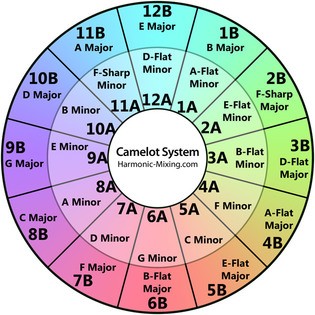

Key matched mixing, including major/minor or minor/major flips, present an exciting way to truly “mix” music. While this is a clean, fail-proof method, it leaves a lot of magic moments on the table. Many DJs play it safe and mix during the drum breaks so there are no harmonic clashes. If In Minor: Add 3 to the number: EX: 10A to 1B.If In Major: Subtract 3 from the number EX: 7B to 4A.If you are feeling adventurous, and want to mix out of the box, try an “Absolute Major/Minor” switch by staying in the same key and transitioning from F Major to F minor. In this case D minor (7A) contains the same notes as F major (7B) so the two can be mixed together. There is one simple way to mix from major to minor harmonically: match the number, and change the letter from A to B or visa versa.Ĭheck out the camelot system created by Mixed in Key below which makes it easy to visualize. Imagine the current playing song is in 7B, and the desire is to mix out perfectly in key but there are no suitable 7B tracks in the library. There are however a few gems in major keys, which provide excellent dance floor lift but present a musical mixing challenge. If you are playing any form of electronic music then chances are very high that most of your library is in a minor key.
#Camelot wheel dj how to#
Today I have one simple tip for you: how to transition smoothly between major and minor keys – along with one other bonus technique for good measure.įirst things first, if you’re not up to speed on mixing “in key” then check out this article for a primer – then pop back while we delve into more advanced territory. What’s next in the pantheon of creative DJ mixing? How about advanced harmonic transitions? DJs talk all the time about taking people on a “journey”, but to really create a musical story it’s critical to master the language of music. OK, you’ve figured out basic two track mixing, started blending four decks, and even thrown in a little beat juggling for good measure.


 0 kommentar(er)
0 kommentar(er)
